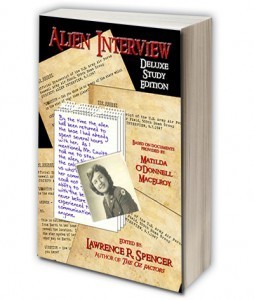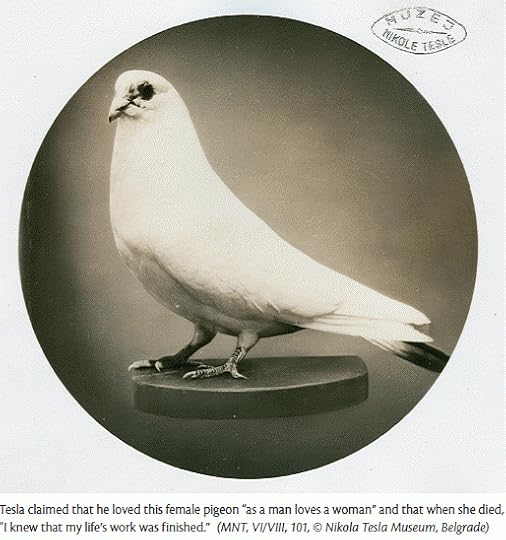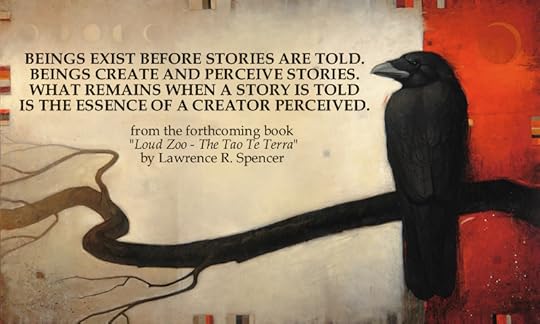Lawrence R. Spencer's Blog, page 413
February 27, 2017
SYNOPSIS OF SHERLOCK HOLMES: MY LIFE
 Sherlock Holmes: My Life, is a memoir in which Sherlock Holmes discloses a conspiracy between Dr. Watson, who is proven to be a fraud, and his associate, Dr. Arthur Doyle, to publish his real life adventures as works of fiction. Sherlock solicits the very able assistance of his brother Mycroft Holmes, who is aided by the British Secret Information Services, to help him resolve the most infamous literary fraud in history!
Sherlock Holmes: My Life, is a memoir in which Sherlock Holmes discloses a conspiracy between Dr. Watson, who is proven to be a fraud, and his associate, Dr. Arthur Doyle, to publish his real life adventures as works of fiction. Sherlock solicits the very able assistance of his brother Mycroft Holmes, who is aided by the British Secret Information Services, to help him resolve the most infamous literary fraud in history!
Their investigation of the two Scottish doctors, together with several authors, publishers and politicians who collaborated with them, exposes the scam as well as the farcical claim to knighthood of “Sir” Arthur Doyle and his life as an opportunistic hoaxer. The insidious plan of Watson and Doyle to erase the real person of Sherlock Holmes inadvertently unveils the true identity of Professor Moriarty.
The actual reasons for the disappearance of Mr. Holmes from public life, after his alleged “death” at the hands of Professor Moriarty in Switzerland, are disclosed for the first time. While staying as a guest at The Diogenes Club, under the cover of a false identity, Mr. Holmes served for several years in the employment of the Office of The Chancellor of The Exchequer, of which Mycroft was the pre-eminent administrator. During this singular period in his career Mr. Holmes encountered his most challenging cases.
Remarking retrospectively upon his diverse career during retirement, Mr. Holmes describes the most enigmatic, yet previously unrecorded, adventures of his life: encounters that influenced the literary creations of Charles Dodgson (author of Alice’s Adventures in Wonderland), J.M. Barrie (author of Peter Pan), the American writer Mark Twain, as well as Bram Stoker (author of Dracula) and Robert Louis Stevenson (author of Strange Case of Dr Jekyll and Mr Hyde).
Finally, Mr. Holmes confides intimate personal details of his concoction and use of alchemical potions, his family, and sexual preference. Philosophical reflections upon his past and future are expressed in several poignant personal letters, including one received from his friend the 13th Dalai Lama, and in a reply to an inquiry from the American science fiction writer H.P. Lovecraft.
______________________________________
— An excerpt from the book: SHERLOCK HOLMES: MY LIFE —
“As it pertains to the case before us, as viewed through the perfect lens of hindsight, it is plain to me now that Watson has always treated me, as regards his writing, in a circumspect and covert manner. Moreover, his constant supplications to me for permission to publish ‘just one more case’, have often bordered upon beggary!”, I cried.
“I am quite certain that your intuition in the matter is accurate, though highly disturbing to me”, said Mycroft. “Have you never examined any of the published volumes of the stories written about your cases by Dr. Watson?”, he asked.
“No, I must admit that I have never bothered to acquire a single copy, nor has Dr. Watson ever brought a single volume of a published work home with him to Baker Street, now that you mention it?”, I replied, realizing to my own astonishment, the singular improbability of it, especially after so many volumes had been published, and over such a protracted number of years, is remarkable!
“I believe that an examination of the published works of Dr. Watson will add more clarity to our discovery of the facts”, Mycroft said pointedly with his fork. “Let me be specific, my dear fellow. Did you, by any chance, read the manuscript of the last of his stories about your investigations? It is the case regarding the lost letter upon which your assistance was solicited by no less than the Prime Minister. Watson fictionalized his name as ‘Lord Bellinger’, and that of the Secretary of Foreign Affairs, under the name of Trelawney Hope”.
These were not their actual names of course, as you are keenly aware. Rather, the gentlemen in question were none other than Robert Gascoyne-Cecil who thrice served as Prime Minister, and twice as the Secretary of State for Foreign Affairs. He was accompanied by the then reigning Prime Minister at the date of the incident, Arthur Balfour”.
I could not deny that the solution of this case was of singular gravity and import to the well-being of Britain. Of course, Mycroft and his staff had been intimately associated, covertly, with attempts to recover the missing letter in that case. However, I admitted that I had not seen that book, or any other for that matter, in published form.”
________________________________________
The book may be ordered in printed form, or downloaded as a PDF, from the website of the publisher: http://stores.lulu.com/pan
Originally posted 2015-08-05 01:08:59. Republished by Blog Post Promoter
February 26, 2017
A PURPOSE FOR LIFE
“I have been feeding pigeons, thousands of them, for years; thousands of them, for who can tell —
“But there was one pigeon, a beautiful bird, pure white with light gray tips on its wings; that one was different. It was a female. I would know that pigeon anywhere.”
“No matter where I was that pigeon would find me; when I wanted her I had only to wish and call her and she would come flying to me. She understood me and I understood her.
“Yes,” he replied to an unasked question. “Yes, I loved that pigeon, I loved her as a man loves a woman, and she loved me. When she was ill I knew, and understood; she came to my room and I stayed beside her for days. I nursed her back to health. That pigeon was the joy of my life. If she needed me, nothing else mattered. As long as I had her, there was a purpose in my life.”
“Then one night as I was lying in my bed in the dark, solving problems, as usual, she flew in through the open window and stood on my desk. I knew she wanted me; she wanted to tell me something important so I got up and went to her.
“As I looked at her I knew she wanted to tell me — she was dying. And then, as I got her message, there came a light from her eyes — powerful beams of light.
“Yes,” he continued, again answering an unasked question, “it was a real light, a powerful, dazzling, blinding light, a light more intense than I had ever produced by the most powerful lamps in my laboratory.
“When that pigeon died, something went out of my life. Up to that time I knew with a certainty that I would complete my work, no matter how ambitious my program, but when that something went out of my life I knew my life’s work was finished.”
___________________________
— From PRODIGAL GENIUS: The Life of Nikola Tesla by John J. O’Neill:
Originally posted 2013-07-26 14:54:23. Republished by Blog Post Promoter
February 25, 2017
BE BEAT: TALK LIKE A BOHEMIAN HIPSTER
Plenty of phrases from the first self-described hipster generation have lasted into modern conversation: people still get bent out of shape, annoying people bug us and muscular guys are still built, just to scan the b-words. Here are 26 words and phrases that don’t get much use today, but are worth sneaking into conversation.
1. A shape in a drape
A well-dressed person. “Usually she just wears jeans, but she sure is a shape in a drape in that dress.”
2. Bright disease
To know too much. “He has bright disease. Make sure he doesn’t rat us out.”
3. Claws sharp
Being well-informed on a number of subjects. “Reading Mental Floss keeps your claws sharp.”
4. Dixie fried
Drunk. “It’s Friday and the eagle flies tonight. Let’s go get dixie fried.”
5. Everything plus
Better than good-looking. “He wasn’t just built, he was everything plus.”
6. Focus your audio
Listen carefully. “Shut your trap and focus your audio. This is important.”
7. Gin mill cowboy
A bar regular. (A gin mill is a bar.) “Cliff Clavin was the _flossiest gin mill cowboy of all time.”
8. Hanging paper
Paying with forged checks. “I hope that chick who stole my purse last week goes to jail for hanging paper.”
9. Interviewing your brains
Thinking. “I can see you’re interviewing your brains, so I’ll leave you alone.”
10. Jungled up
Having a place to live, or specific living arrangements. “All I know is that he’s jungled up with that guy he met at the gin mill last month.”
11. Know your groceries
To be aware, or to do things well. (Similar to Douglas Adams’ “know where your towel is.”) “You can’t give a TED Talk on something unless you really know your groceries.”
12. Lead sled
A car, specifically one that would now be considered a classic model. “His parents gave him their old lead sled for his sixteenth birthday.”
13. Mason-Dixon line
Anywhere out of bounds, especially regarding personal space. “Keep your hands above the Mason-Dixon line, thanks.”
14. Noodle it out
Think it through. “You don’t have to make a decision right now. Noodle it out and call me back.”
15. Off the cob
Corny. “Okay, some of this old Beat slang is kinda off the cob.”
16. Pearl diver
A person who washes dishes. “I’m just a pearl diver at a greasy spoon, but it’s a job.”
17. Quail hunting
Picking up chicks. “I’m going quail hunting and you’re my wingman.”
18. Red onion
A hole in the wall; a really crappy bar. “I thought we were going somewhere nice but he just took me to the red onion on the corner.”
19. Slated for crashville
Out of control. “That girl’s been in college for five minutes and is already slated for crashville.”
20. Threw babies out of the balcony
A big success; interchangeable with “went down a storm.” “I was afraid the party would suck, but it threw babies out of the balcony.”
21. Used-to-be
An ex, a person you used to date. “I ran into my used-to-be in Kroger’s and I looked terrible.”
22. Varicose alley
The runway in a strip club. “Stay in school or you’ll be strutting varicose alley, girls.”
23. Ways like a mowing machine
An agricultural metaphor for impressive sexual technique, from the song “She’s a Hum Dinger” by Buddy Jones. “She’s long, she’s tall / She’s a handsome queen / She’s got ways like a mowing machine.” (Let us know if any of you ever successfully pull this one off in conversation.)
24. X-ray eyes
To understand something, to see through confusion. “That guy is so smart. He’s got x-ray eyes.”
25. Yard
A thousand dollars. “Yeah, it’s nice, but rent is half a yard a week. Let’s jungle up somewhere else.”
26. Zonk on the head
A bad thing. “It stormed all night and we lost power, but the real zonk on the head was when hail broke the bedroom window.”
These were collected from Straight From the Fridge, Dad: A Dictionary of Hipster Slang by Max Décharné and A Historical Dictionary of American Slang. The first is exceptional in its completeness and worth purchasing if you love dictionaries, and the second is free online and easily searchable. Try them both!
Read the full text here: http://www.mentalfloss.com/blogs/archives/141912#ixzz26iRs1Nlk
–brought to you by mental_floss!
Originally posted 2012-09-17 02:16:27. Republished by Blog Post Promoter
February 24, 2017
YOUR QUALITIES AS A GOD
“Your qualities as god are seen in your creations”
Lawrence R. Spencer
Originally posted 2011-11-12 15:35:19. Republished by Blog Post Promoter
February 23, 2017
THIRD EYE
 The third eye (also called the mind’s eye, or inner eye) is a mystical and esoteric concept referring to a speculative invisible eye which provides perception beyond ordinary sight. In certain dharmic spiritual traditions such as Hinduism, the third eye refers to the ajna, or brow, chakra.
The third eye (also called the mind’s eye, or inner eye) is a mystical and esoteric concept referring to a speculative invisible eye which provides perception beyond ordinary sight. In certain dharmic spiritual traditions such as Hinduism, the third eye refers to the ajna, or brow, chakra.
The third eye refers to the gate that leads to inner realms and spaces of higher consciousness. In New Age spirituality, the third eye often symbolizes a state of enlightenment or the evocation of mental images having deeply personal spiritual or psychological significance. The third eye is often associated with religious visions, clairvoyance, the ability to observe chakras and auras, precognition, and out-of-body experiences. People who are claimed to have the capacity to utilize their third eyes are sometimes known as seers. (Wikipedia.org)
HUMAN ANATOMY IN 80 SECONDS
THIS 80 SECOND VIDEO SHOWS YOU THE ESSENTIAL INFORMATION YOU NEED TO KNOW ABOUT THE ANATOMICAL COMPONENTS OF A HUMAN BIOLOGICAL ENTITY. ANY QUESTIONS? Consult Greys Anatomy for further details….
IMPORTANT NOTE: THE SPIRITUAL ENTITY THAT ANIMATES THE BODY IS NOT SHOWN because Spirits are INVISIBLE, except to other Spirits….
The Human Body (stop-motion!) from kellianderson on Vimeo.
Originally posted 2013-08-29 15:39:29. Republished by Blog Post Promoter
February 22, 2017
NOTHING WAS SOMETHING BEFORE THERE WAS “IS”

Since time immemorial, curious people have asked where the universe came from. Nowadays we have a secular answer: the Big Bang. And yet that answer, incredible as it may be, is only partially satisfying. After all, we can still ask where the Big Bang came from; and we can still wonder, sensibly enough, how something (the universe) could come from nothing (whatever came before it). In his new book, On Being, Peter Atkins, a British chemist and science writer, offers an intriguing answer to those questions. To understand how something can come out of nothing, he writes, you have to appreciate the fact that “there probably isn’t anything here anyway” — that “at a deep level there is nothing” in the universe, really. “The substrate of existence,” he argues, “is nothing at all.”
Consider electrical charge. In our universe, there are positively and negatively charged particles. How did all that charge come into being out of nothingness? It didn’t, Atkins writes, since “the total charge is zero.” The Big Bang merely separated out a uniform state of chargelessness into many individual instances of charge, positive and negative. The same goes for matter and energy generally: the total amount of matter and energy in the universe seems to be balanced out by huge amounts of “dark matter” and “dark energy,” which express themselves in terms of gravitational attraction. The Big Bang didn’t create all that energy, as such. Instead, it seems to have turned an initial Nothingness into a “much more interesting and potent” Nothingness — a “Nothing that has been separated into opposites to give, thereby, the appearance of something.”
How much, if anything, does that explain? “The separation of Nothing into opposites still needs explanation,” Atkins concedes. Still, he writes, “it seems to me that such a process, though fearsomelessly difficult to explain, is less overwhelmingly fearsome than the process of positive, specific, munificent creation.” The main point is that the Big Bang doesn’t mark, necessarily, the creation of something out of nothing. If that happened at all — and it may be, Atkins points out, that there was has never been absolutely Nothing, in a total sense — then it probably happened further back in the pre-cosmological past. Instead, it marks the emergence of texture, differentiation, and particularity out of even, unchanging featurelessness. It’s not something out of nothing, but interestingness out of boredom.
Originally posted 2011-07-07 11:10:21. Republished by Blog Post Promoter
February 21, 2017
BE A POOKA
 Excerpt from the book “1001 THINGS TO DO WHILE YOU’RE DEAD”
Excerpt from the book “1001 THINGS TO DO WHILE YOU’RE DEAD”
# 497 — BE A POOKA.
“According to legend, the “pooka” or “púca” is a deft shape-shifter, capable of assuming a variety of terrifying or pleasing forms, and may appear as a horse, rabbit, goat, goblin, or dog. (See Footnote) [i]
If you haven’t seen “Harvey”, the famous Hollywood film starring James Stewart, you missed a delightful treat.
The main characters in the film are a gentle, alcoholic bachelor named Elwood P. Dowd and his “invisible” best friend named Harvey. Harvey is a Pooka. He is an invisible 6’ 3” tall rabbit.
The two friends go everywhere together and carry on conversations in front of strangers, much to the dismay of the people they encounter who can’t “see” Harvey. Like most spirits, Harvey and his buddy Elwood are ridiculed and persecuted.
They think Elwood is “crazy” and decide to commit him to a psychiatric hospital so he can be “cured” of his “delusion” that he has an 6’ 3” tall rabbit friend.
Oddly and ironically, the word “psyche” mean spirit and “ology” means “to study”. Therefore, psyche-ology should be the “study of the spirit”.
Sadly, psychiatrists, and the military governments that pay them, do not study or acknowledge the existence of spirits. Their only interest is to “control” the “population”.
Therefore, they tell everyone that a human being is a body, and ONLY a body. They also tell everyone that their ability and awareness comes from their brain – which is a piece of meat inside the skull that conducts electrical messages from YOU, the spirit, to the rest of the body.
Now that you are living outside of a body, it is obvious that government psychiatry is a scam and a criminal activity. It has nothing to do with spirits, except to disable and destroy them.
In the movie, the “therapy” for Harvey’s buddy Elwood was to give him psychiatric pharmaceutical drugs which would make him come to his “senses” and make him “see reality”. “Seeing reality” means you are “cured” of your “delusions”, i.e. of having a friend like Harvey.
Fortunately, Harvey and Elwood were able to escape from the psychiatric drug pushers and lived happily ever after as best friends.
Unfortunately, millions of children and adults on Earth are not so lucky. In the US millions of kids are given Ritalin and millions of adults are given antidepressant drugs to help them “see reality”, i.e. become a mindless robot without any ability to imagine or create their own reality.
Of course, the reason these people are depressed to being with is because they have already seen too much of reality.”
FOOTNOTE:
[i] Origins of the Pooka began a few thousand years back, the Pooka was originally a central European god known as the Boga, a nature god similar to the Greeks’ Pan.
Some etymologists claim that the Slavic word Bog was derived from Boga. Bog of course, is the Slavic name for the Almighty, and is the predecessor of the English word God.
You might find it amusing to tell your
Christian friends that every time they invoke the name of God, they are, in fact, praying to a great horny rabbit. The Púca (also Pooka, Phouka, Púka, Glashtyn, Gruagach) is a creature of Irish and Welsh myth.
It is one of the myriad of fairy folk, and, like many fairy folk, is both respected and feared by those who believe in it. According to legend, the Púca is an adroit shape changer, capable of assuming a variety of terrifying forms. It may appear as an eagle or as a large black goat (its name is a cognate of the early
Irish ‘poc’, ‘a male goat’ and it lends its name to Puck, the goat-footed satyr made famous in Shakespeare’s A Midsummer Night’s Dream), but it most commonly takes the form of a sleek black horse with a flowing mane an glowing yellow eyes. The Púca is considered by many to be the most terrifying of all the creatures of faery. Not the slightest reason is its appearance, but it is its powers that are most feared.
It is said to waylay travelers and others about at night, and if it is able to toss them onto its back, it will, at very least, provide them with the ride of their lives, from which they will return forever changed. A similar creature, the Aughisky (Water-horse), will allow itself to be saddled and ridden, but if it is ever taken next to a river or pond, it will carry its hapless rider into the water and rip him to pieces.
The Púca has the power of human speech, and has been said to call those it feels have slighted or offended it out of their homes for a ride. If they fail to appear, it will tear down fences, scatter livestock, and create general mayhem. Certain agricultural traditions surround the Púca. It is a creature associated with Samhain, the third Pagan (Celtic, Wiccan)
Harvest Festival, when the last of the crops is brought in. Anything remaining in the fields is considered “puka,” or fairy-blasted, and hence inedible. In some locales, reapers leave a small share of the crop, the “púca’s share,” to placate the hungry creature. Nonetheless, November Day (November 1) is the Púca’s day, and the one day of the year when it can be expected to behave civilly. In some regions, the Púca is spoken of with considerably more respect than fear; if treated with due deference, it may actually be beneficial to those who encounter it. The Púca is a creature of the mountains and hills, and in those regions there are stories of it appearing on November Day and providing prophecies and warnings to those who consult it.
At the beginning of the 21st century, the Púca has succumbed to the disembowelment which has been the fate of so many other powerful mythological creatures. Contemporary media have reduced it to a harmless, shy, and slightly demented garden-gnomish weevil eater.
Originally posted 2011-08-06 00:02:51. Republished by Blog Post Promoter
February 20, 2017
BEST SELLERS ABOUT UNTOUCHABLES
 I am very careful about the books I read, and who wrote them, and published them, and why. I read a lot of books. Not many novels. Mostly non-fiction. However, I started reading Shantaram after I did a lot of research about the author, Gregory David Roberts, and read parts of the book on the internet. I bought the book because I think the author is an excellent writer, who escaped from a 20-year prison sentence in Australia fled to Bombay (Mumbai) where he lived for many years in the slums with the “untouchables” of India. He spent most of his time as a solitary nurse treating the injuries and illnesses of his neighbors with a first aid kit in own his tiny hovel. He never charged money. He also sold drugs and worked for gangsters to earn a modest living while still in hiding as an escaped convict. Later, the author was captured in Germany and completed serving his 20 year prison sentence.
I am very careful about the books I read, and who wrote them, and published them, and why. I read a lot of books. Not many novels. Mostly non-fiction. However, I started reading Shantaram after I did a lot of research about the author, Gregory David Roberts, and read parts of the book on the internet. I bought the book because I think the author is an excellent writer, who escaped from a 20-year prison sentence in Australia fled to Bombay (Mumbai) where he lived for many years in the slums with the “untouchables” of India. He spent most of his time as a solitary nurse treating the injuries and illnesses of his neighbors with a first aid kit in own his tiny hovel. He never charged money. He also sold drugs and worked for gangsters to earn a modest living while still in hiding as an escaped convict. Later, the author was captured in Germany and completed serving his 20 year prison sentence.
What the novel Shantaram reveals about  the slums and ghettos of Mumbai is something that most Americans don’t know because nobody ever talks about “untouchables”! Poor people are “invisible” to the “upper classes”, i.e. people who earn more than a few dollars a day. Sixty percent of the 20 million citizens of Mumbai live on only 6% of the land, within a stones throw of the wealthiest people in India. The oppressive disparity of wealth, health services and housing between the rich and poor is an issue in the U.S. and around the world, but most visible and extreme in Mumbai.
the slums and ghettos of Mumbai is something that most Americans don’t know because nobody ever talks about “untouchables”! Poor people are “invisible” to the “upper classes”, i.e. people who earn more than a few dollars a day. Sixty percent of the 20 million citizens of Mumbai live on only 6% of the land, within a stones throw of the wealthiest people in India. The oppressive disparity of wealth, health services and housing between the rich and poor is an issue in the U.S. and around the world, but most visible and extreme in Mumbai.
 I have known many very poor people from the slums of the southern states in the U.S.. They are the same kind of “untouchables” as the people who live in the slums of India. These are the rapidly growing population of the private prison system in the U.S.. I am reading Shantaram because it is a novel about “untouchables”, written by a convict who also a nurse, a philosopher and an artist with the English language. Alien Interview It was written by a nurse, dictated to her by an alien philosopher about “untouchables”, who are the entire population of prison planet Earth. — Lawrence R. Spencer. 2015
I have known many very poor people from the slums of the southern states in the U.S.. They are the same kind of “untouchables” as the people who live in the slums of India. These are the rapidly growing population of the private prison system in the U.S.. I am reading Shantaram because it is a novel about “untouchables”, written by a convict who also a nurse, a philosopher and an artist with the English language. Alien Interview It was written by a nurse, dictated to her by an alien philosopher about “untouchables”, who are the entire population of prison planet Earth. — Lawrence R. Spencer. 2015
Originally posted 2015-09-03 14:35:13. Republished by Blog Post Promoter







